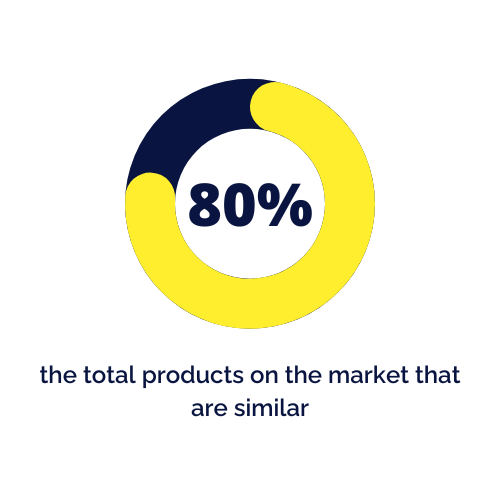Table of Contents
Overview
In this article, we will explore the importance of customer experience. We will understand how customer experience can increase sales, revenue, loyalty, and retention. And also, how customer experience can collect valuable data and insights, decrease costs, and enhance a brand’s reputation.
Later, we will see the challenges that many e-commerce face today. And, in conclusion, we will see a better solution to implement, that will improve your customer experience.
What is customer experience?
Before starting to understand why customer experience is so essential, for newbies, let’s explain what is the customer experience.
Customer experience is how a brand interacts with the people who come into contact with it.
Why customer experience is important?
Now that we have a definition of what customer experience really is, we will understand why it is so important.
Catching the customer’s attention it becomes very important nowadays. Brands have difficulty bringing and keeping people into their offline/online stores.
That’s why, in a world that is advancing at light speed, you have to move fast. You have to be up to date with the new methods and technology. This helps you to always have a better customer experience and stay competitive.
So, in the following paragraphs, I will explain to you why improving your customer experience matters so much.
The 6 Reasons Why Having a Good Customer Experience is Important
Customer experience helps your brand to have good customer engagement. AKA you establish a good relationship with your clients thanks to the experience that they had with you.
This will bring you the following benefits:
- BETTER CUSTOMER RETENTION
It is 60/70% easier to sell to an existing customer than to sell to a new one.
So, you will get more engaged customers who will be back to purchase from you. - INCREASE CUSTOMER LOYALTY
Loyal customers spend more on your brand because they trust it. E.g. Apple, Coca-Cola, and Nike.
Gallup’s study says engaged customers are 87% less likely to leave a brand than disengaged customers. - BRING REFERRALS
After reaching good customer engagement, loyalty, and retention, you will start to see that your customers will bring other people. These are referrals.
It means that you will see more people in your e-commerce or offline store and your sales will increase. (See a full article about e-commerce sales, here) - MORE FEEDBACK
More customers = More feedback. Getting feedback will help your brand to grow.
You will collect useful data about customers’ needs and preferences necessary to improve your product and customer experience. - GOOD REVIEWS
Engaged customers are more likely to share their positive experiences with others. Which can help to improve a brand’s reputation and attract new customers. As a result, according to a Nielsen study, 92% of consumers trust suggestions. In every form. - DECREASE COSTS
When you are able to improve your products and services, your customers will be more satisfied. Like this, your costs will decrease because of fewer complaints and returns.

Customer Experience: What are the problems your e-commerce is facing?
Now that we came across this list, I hope you understand why improving your customer experience is so crucial.
But of course, just understanding it, you will not improve it. So how to do it? How to improve your customer experience? What are the problems that your e-commerce can have?
Here is a list:
- Catching and keeping customers’ attention
- Differentiating your products and services
- Creating a solid relationship
- Collecting valuable customer data
We will go through each of these problems so that, only if solved, you will be able to be ahead of your competitors and close the gap between a customer experience and a GOOD customer experience.
1) Catching and keeping customers’ attention
In today’s fast digital world, catching and maintaining customers’ attention is one of the most significant challenges you can face. With the constant storm of information and advertising, consumers now have short attention spans.
In fact, according to a study by Marketing Metrics, the average attention span of a person is less than 8 seconds. As a result, it’s becoming hard for brands to stand out.
So, to be ahead of the competitors, your brand must draft irresistible and relevant content that resonates with your target audience.
You can do that through persuasive storytelling, eye-catching images or videos, or delightful social media posts. This is to say that you must always deliver content that catches customers’ curiosity and provides genuine value.
In the end, by understanding your audience’s preferences and adapting your strategies, you can create good impressions and build a loyal customer base.
2) Differentiate your brand and your product from the others
Another area for improvement is the difficulty of differentiating your products and services from your competitors. Many brands struggle with finding their unique selling proposition (USP) and effectively communicating it to their audience.

In fact, according to a study by BCG 80% of products on the market today are very similar. This makes it hard for you and other e-commerce to stand out.
To tackle this problem, you must conduct detailed market research to understand your competitors and their customers’ needs and pain points.
Once you define your USP, you should start to spread and communicate the benefits of your products.
This will help your customers to understand your products, and it will improve your customer experience.
3) Create an emotional connection with the customers
According to a study by Forrester Research, emotional connections are twice as powerful as logical ones when driving customer loyalty.
Building and maintaining strong, lasting relationships with customers is fundamental for your success. The challenge lies in creating genuine connections in a world where transactions can often feel impersonal.
You must prioritize customer experience by providing exceptional service, personalized communication, and consistent support. Beyond this, promoting a sense of community and loyalty can go a long way.
Engaging customers through loyalty programs, exclusive content, or user-generated content campaigns can close the gap between brand and audience. Building trust and showing that you genuinely care about your customers’ needs and feedback can help create a solid relationship.
4) Not getting insights and a good Return On Investment (ROI)
Collecting and leveraging customer data is crucial to make informed decisions. In fact, according to a study by McKinsey, if your company uses the right data-driven insights it could be easier:
- 23 times more to acquire customers
- 6 times more to retain customers
- 19 times more to be profitable
However, you may often face challenges in obtaining valuable data while respecting customers’ privacy.
To address this, you should adopt transparent data collection practices, clearly communicate the benefits of sharing information, and offer meaningful incentives to encourage customers to share their data sooner.
Utilizing advanced analytics tools and AI-driven insights can help you collect the right data. This will enable you to create more relevant and personalized experiences, improve products, and drive business growth.

Customer Experience: Use Augmented Reality
The problems described above can be hard to afford. Fortunately, you can solve them using a technology like Augmented Reality (AR).
But what Augmented Reality is?
Augmented Reality is a superpower! It gives us the possibility to see things that normally we wouldn’t be able to see.
I explain better myself. AR allows you to see the 3D virtual objects in your space through a smartphone. Or in the future via smart glasses.
For example, as an e-commerce, you implement AR. In this way, you will let your customers see your products in their space, avoiding any kind of delivery!
That’s why in the last years Augmented Reality is becoming so popular. Most businesses already implemented it into their e-commerce to improve their customer experience.
To give you proof of how AR will help you to solve your customer experience problems, let’s see some examples.
Create a unique and personalized experience
Firstly, you can use AR to capture and keep customer attention by creating immersive, interactive experiences.
For example, let’s suppose that you are a furniture e-commerce brand. You can use AR to let your visitors try your tables in their living room. As a result, Augmented Reality can increase your customer’s time on your e-commerce by more than 20 minutes.
Augmented Reality can also help your company to differentiate products and services.
For example, you can add some virtual features to your product. You can use AR to show how to assemble your product.
Create a strong emotional connection with AR
Augmented Reality creates engaging and emotional experiences that connect your customers with your brand.
This happens because people will use to spend more time with your products. As a result, they will create an emotional connection with your brand.
Taking the example above, a furniture brand can use AR to increase the likelihood of customers buying by more than 85%.
Understand your customers’ behavior and Improve your ROI
Also, by allowing users to use your AR experience, you can track their behavior and get data and insights. You can use this data to improve products, services, and marketing strategies.
Likewise, Augmented Reality will help you increase your customer engagement and more satisfied customers. This will generate a domino effect on your brand by improving your ROI.
Augmented Reality can help to improve customer experience
In conclusion, Augmented Reality offers a range of solutions to the customer experience problem.
From creating immersive and interactive experiences to collecting useful customer data. AR can help you increase customer experience and drive conversions.
You can book a meeting here if you want to know how to implement Augmented Reality! 👇🏼

